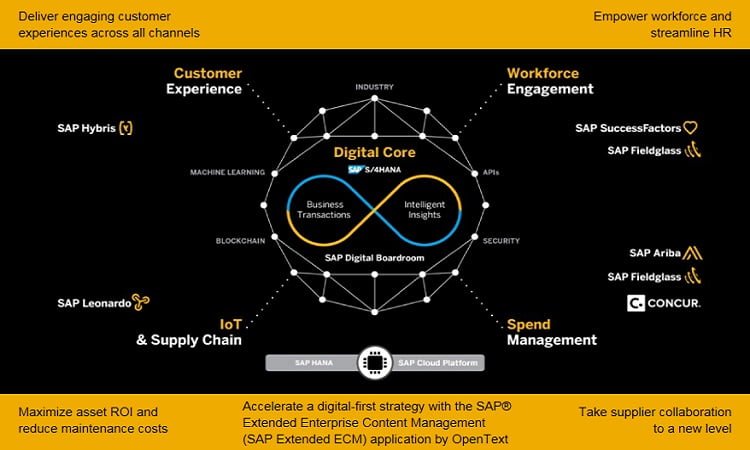Businesses in Malaysia face a myriad of challenges on a day-to-day basis. Often when I am out meeting customers, they talk to me about the challenges in today’s economic environment – high business costs, lack of funds, strong competition at home and abroad, employee skills gaps – the list goes on.
Their concern at times is how to stay afloat in today’s turbulent economy, sandwiched between established multi-million dollar companies and nimbler, more innovative start-ups.
While challenges persist, opportunities for local businesses are significant.
Local businesses can leverage their agility and speed to break into new markets, as well as use their experience to their advantage when competing with start-ups.
Digital technology will be a great enabler to gain a distinct advantage with regards to speed, cost and the ease of doing business.
However, a recent IDC study commissioned by SAP found that close to 1 in 3 (29%) SME leaders in Asia Pacific said they spend most of their time managing daily operations, instead of planning for growth.
The study also revealed that while 55% of SME leaders are optimistic about the performance benefits of new technology, only 47% believe that their active participation in the digital economy is essential to their survival. This means that more than half of all SME leaders surveyed do not have digital transformation at the top of their mind.
Furthermore, more than a quarter surveyed do not see the value of adopting new technology to digitalize their business due to concerns about the risks of new technology. The first step for many SMEs is to recognise the business value and growth potential brought about by a digital framework. SMEs need to run like modern businesses, using today’s enterprise-grade technologies, not yesterday’s innovations.
For example, a local management services company recently implemented a powerful solution to empower management via insights to act “in the moment”. The solution is both intelligent – going beyond automation to provide predictive suggestions – and integrated – not only among the organisation’s various departments but also with the external business world.
The reason is simple. Technology should drive growth rather than limit it. In today’s fast-paced business environment, being digital is no longer about innovation, survival. The question for many SME leaders is: am I making the right decisions? Does my company have what it takes to survive – and thrive – within today’s Digital Economy?
Digital Business Framework
To address these concerns, businesses should start looking at a structured and executable framework meant to minimize risk arising from their digital transformation journey. By doing this, businesses can then run truly digital.
Digital technology has emerged as a tool that can help businesses gain a distinct advantage when it comes to speed, cost and the ease doing of business. It has also become a platform for them to break into yet unachievable markets.
With today’s borderless global economy, Malaysia and our enterprisescan further leapfrog ahead over other countries if they are willing to proactively evolve to stay relevant.
Covering all aspects of business, SMEs can easily execute their digital business strategy across the following areas:
- The Digital Core: With a digital core, businesses can run their business in real-time and leverage business insights to simulate forecasts that will improve decision making, productivity and profitability.
- Customer Experience: Improve customer experience through personalized services across multiple channels by integrating marketing, sales, services and commerce into a single platform.
- Workforce Engagement: People are working harder than ever but are accomplishing much less due to organizational complexity. Reality today is that businesses need total workforce engagement and advanced analytics which will enable them to attract and retain the best talent.
- Business Networks and Supplier Collaboration: Collaboration across markets is the key to value creation, especially for SMEs that are internationalizing. The greatest challenge in connecting vast ecosystems is the exponential data growth generated and managed by the network. By tapping on the right solutions, SMEs can better share data in real-time, provide personalized and contextual insight, and optimize how companies exchange and offer products and services for better business results.
- Assets and Internet of Things: Businesses can leverage IoT developments to bring greater value to customers, as well as develop new business models and revenue streams through unique partnerships. With the digital basics in place, SMEs can embrace new developments and be the frontrunners in using technology to drive greater results.
The tools to help SMEs are already available. The SAP Digital Business Framework is designed to help SMEs innovate faster and with minimal risk. Instead of waiting for a perfect solution, businesses should start by engaging with new technology as it emerges and identify new opportunities.
The bottom line is: Act now if you want to move from being a victim of digital disruption to being a digital disruptor.



